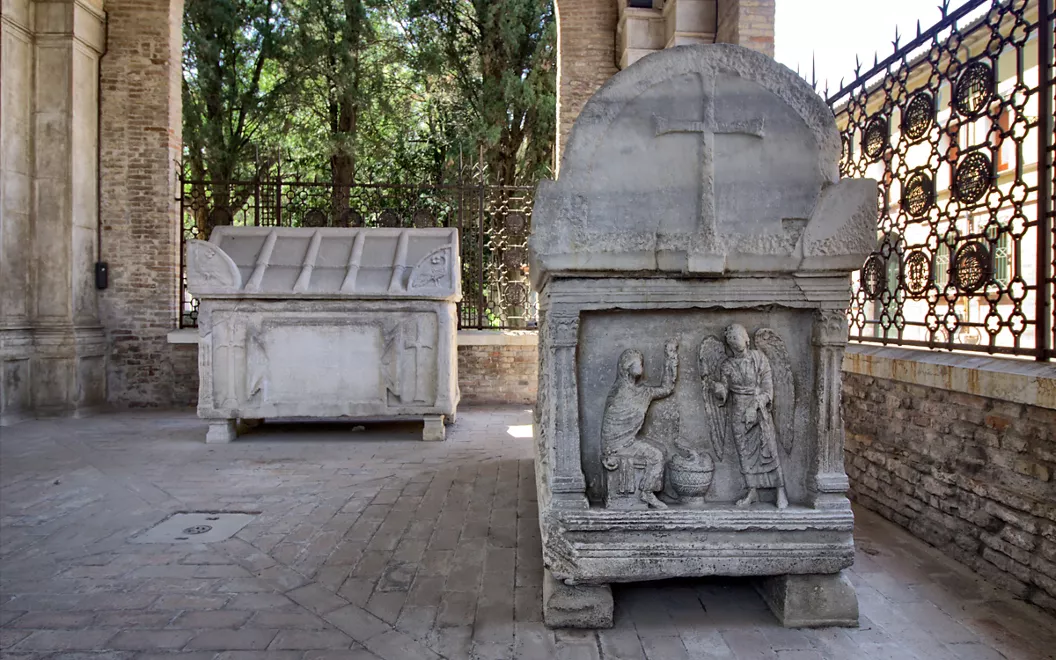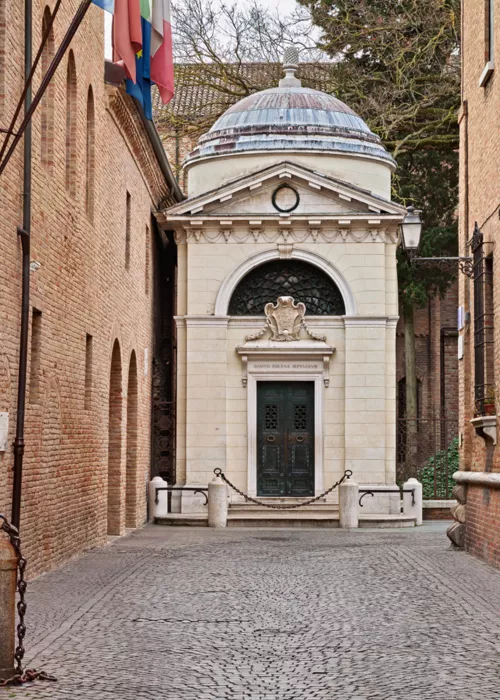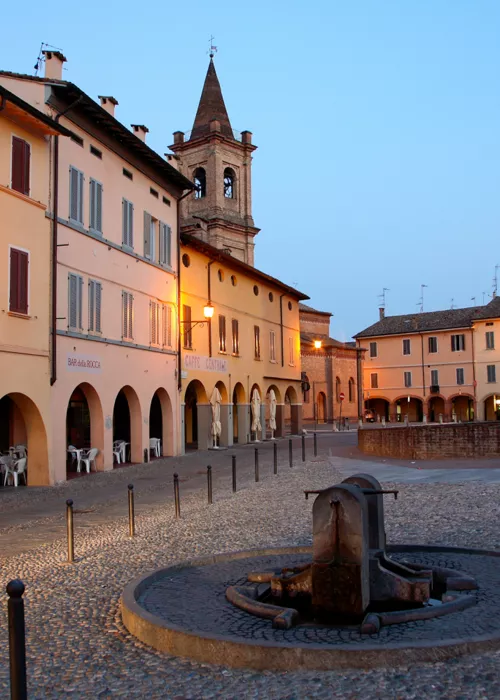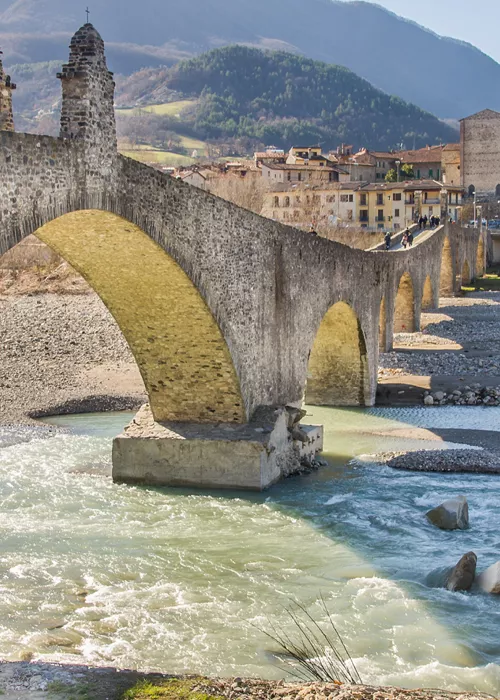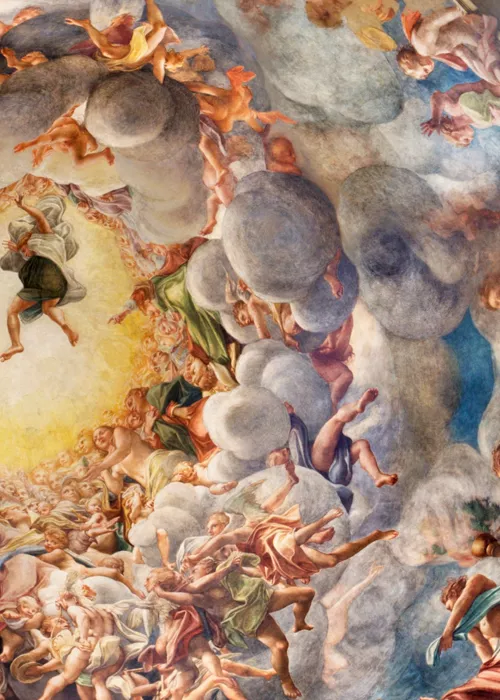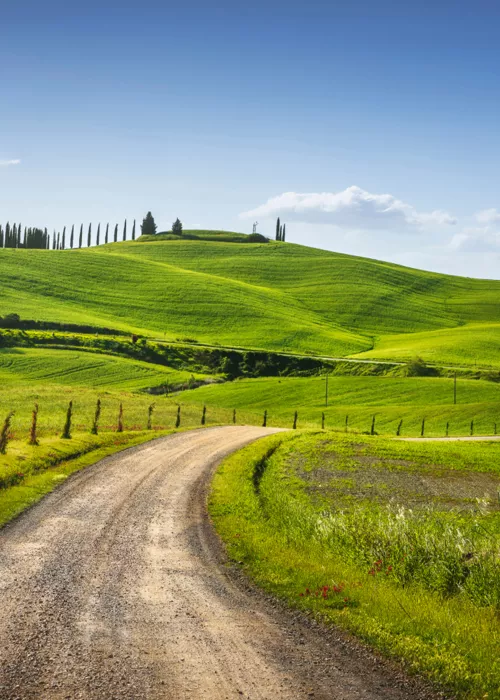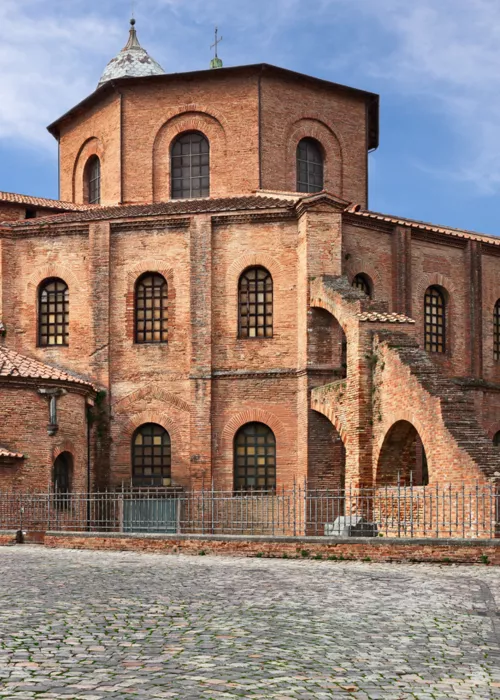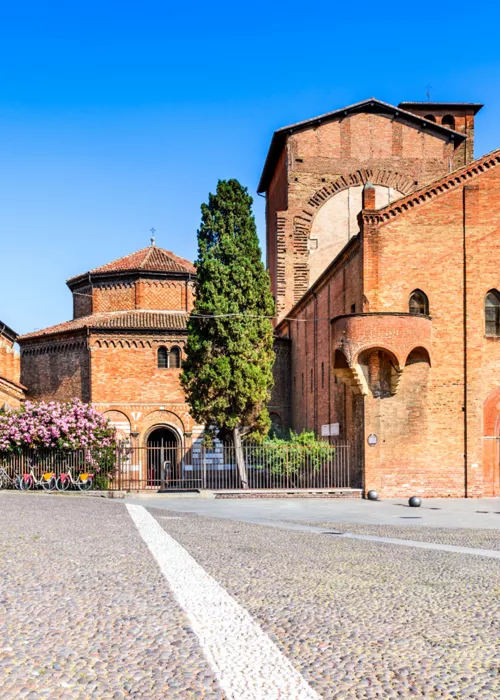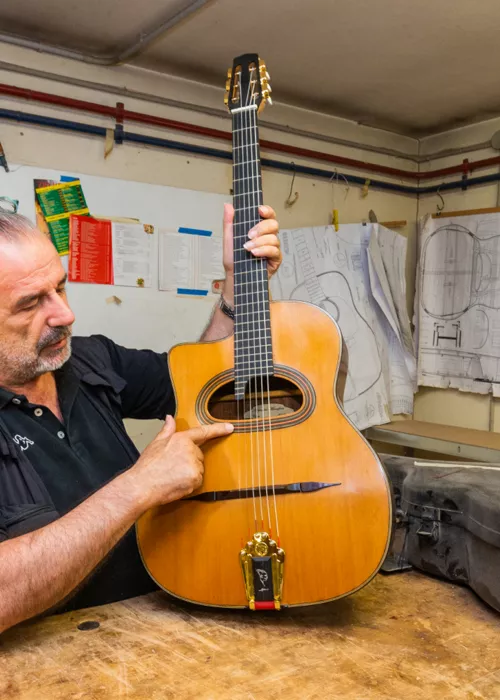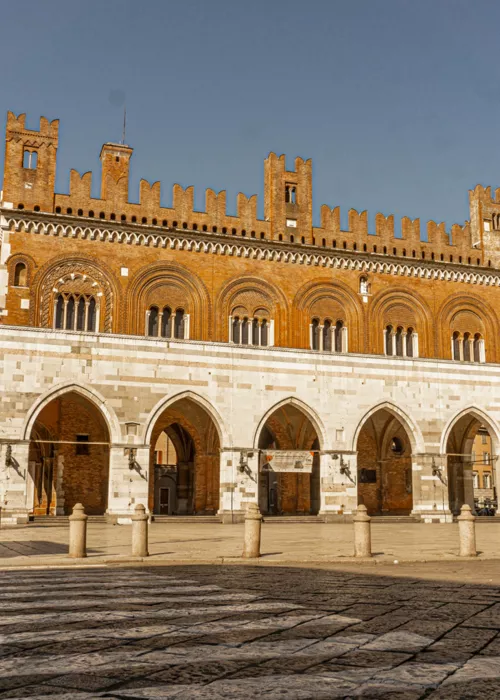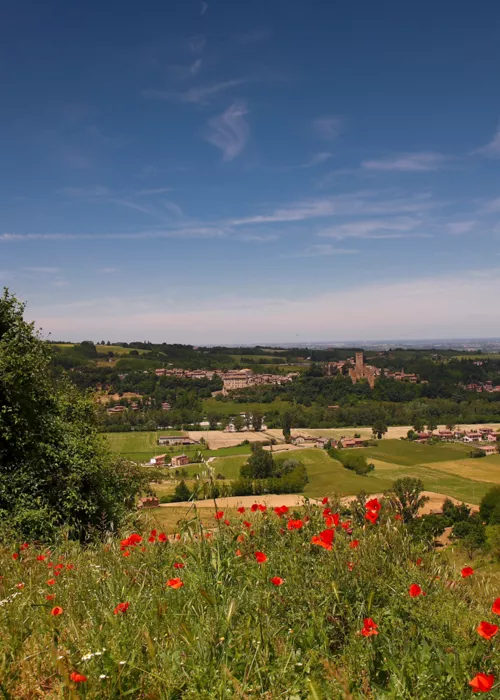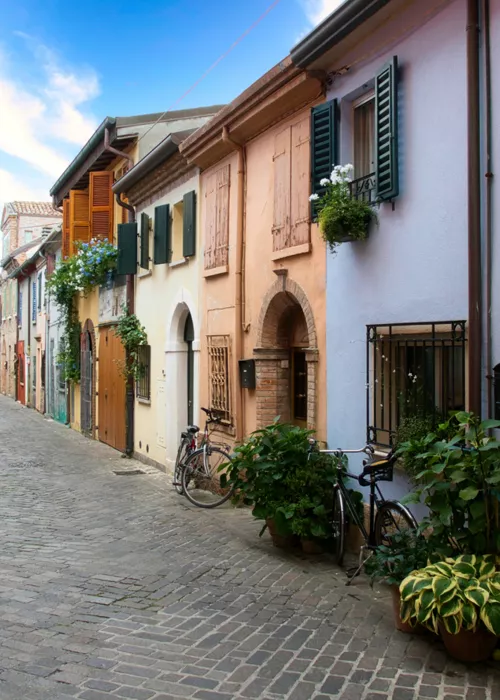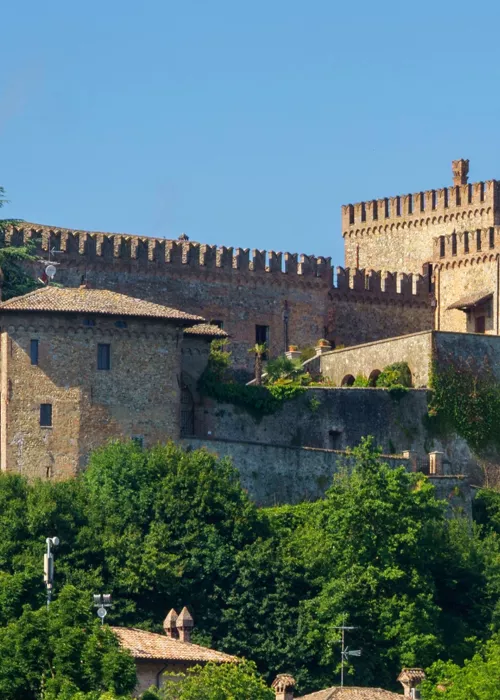Dante's Tomb

Seeing Ravenna through the work of Dante is certainly more complicated than looking for Leopardi in Recanati or Leonardo in Milan. To visit Leopardi's home, you simply buy a ticket, like in Milan, where you can view the Last Supper. The only material evidence of the physical presence of Durante di Alighiero degli Alighieri in Ravenna are his bones, laid in the Roman sarcophagus.
But poetry is not composed of bricks or pigment on walls, and although you can look for the solitary hill of Leopardi's L'infinito in Recanati, or photograph the precipitous course of the Adda, which serves as a backdrop to the Virgin of the Rocks, near Milan, it is not like this in Ravenna.
Nevertheless, paying homage to Dante's Tomb is still worthwhile, not only because it is a small, very respectful neoclassical building, but also because, above the poet's sarcophagus you can see a remarkable bas-relief of Dante absorbed in reading, sculpted by the Renaissance artist, Pietro Lombardo, at the end of the 15th century. And every day, beside Dante's Tomb, a canto of the Comedy, described by Giovanni Boccaccio as 'Divine', is read aloud.
Casa Dante

A Dante Museum was inaugurated near the poet's tomb in Via Dante Alighieri as part of the celebrations for the sixth centenary of his death in 1321. Initially, the Municipality evisaged it as a collection of memorabilia, with plaques and objects sent from all over the world for the celebrations in 1908 and in 1921. It then evolved over time, with the organisation of a large exhibition of collections, and was further enhanced by an educational section curated by the Dantesque Centre of the Classense Library.
The final turning point come in September two years ago, when Casa Dante was inagurated in a fourteenth-century stately home, also adjacent to the tomb. A new multi-functional space equipped with exhibition halls, a bookshop, an educational workshop and an additional space: the Meditative Court, in continuity with the Zone of Silence, created near the sarcophagus to respect Dante's rest.
Basilica of St Francis

It is all contained within a tiny plot of land. Like the present-day Casa Dante, but for much longer, the church and convent of the Franciscans of Ravenna are also right beside the tomb of the Supreme Poet. Dante's remains had initially been buried here. And it was here, in the early 1800s, that the friars were forced to abandon Dante’s remains, together with their church and convent, when Napoleon's reforms suppressed the religious orders and requisitioned their properties. The conclusion of the story is worthy of a novel. After the return to the friars to the convent, on 25 May 1865, while maintenance work was being carried out, a mason discovered a wooden box on which a student read the inscription: "Dantis ossa a me Fra Antonio Santi hic posita anno 1677 die 18 octobris" ("Dante’s bones, placed here by me, Fra Antonio Santi, on 18 October 1677"). It was the conditio sine qua non required to make Dante's Tomb much more than an elegant empty votive building.
Basilica of Sant'Apollinare Nuovo

The basilicas of San Francesco and Sant'Apollinare Nuovo share a common history. Both, in fact, date back to the late antiquity of the Roman-Barbarian kingdoms and they are both connected with Dante. Although Sant'Apollinare Nuovo is less directly Dantesque, if you read canto twenty-nine of his Purgatory, with the sacrosanct Virgins who convince Dante to think about putting strong things into verse and the twenty-four seniors, two by two, you realise that this is a poetic reference to the mosaic figurations on the walls of this church. A sequence of martyrs and saints, distributed along the nave of Sant'Apollinare Nuovo, without counting the visual summaries of the port of Classe and Theodoric's palace, offer a sample of quality that has few equals in the world.
To see for yourself, just walk a few blocks from San Francesco to the façade of Sant'Apollinare Nuovo, with its cylindrical bell tower, standing for over twelve centuries.
Basilica of Sant'Apollinare in Classe

Reading verses 97-104 of the fourteenth canto of Paradise, in which Dante and Beatrice rise to the heavenly sphere of Mars, where the spirits form a luminous cross from the centre of which Christ shines forth, you immediately think of the cross in a starry sky, with Christ at its centre, highlighted in the mosaic basin on the apse of Sant'Apollinare in Classe. This is a symbolic representation of the Transfiguration, with the figures of Moses and Elijah on either side of the cross, and beneath it, in an abstract landscape of rocks, trees, flowers, shrubs and birds, Saint Apollinaris standing in prayer among twelve sheep, which symbolise the flock of the faithful.
Classe, in Roman times, was the site of the port of Ravenna, and separate from the city due to its strategic military role. To get there on foot, which is perfectly feasible, takes about an hour, while it takes less than twenty minutes by bicycle and not even a quarter of an hour by car. The regional public transport trains from Ravenna to Classe are fast and cheap.
Although more remote than the first five stops of the itinerary, all in the city centre and some very close to each other, the church is a mandatory destination for any visit to Ravenna.
Pineta di Classe

There is no need to view Byzantine mosaics while reading the Divine Comedy to know that the 'divine thick and living forest' mentioned in the twenty-eighth canto of Purgatory, can be identified with 'the pine forest on the Lido of Classe'. It is equally clear that the place name, Classe, is forced here - in the poem's characteristic chained triplet structure - to rhyme with 'passi' [steps] two verses later.
The pine forest extends for 900 hectares southeast of the Basilica of Sant'Apollinare in Classe and even after Dante, it has earned a series of literary references, from Boccaccio to Byron, for the appeal and richness of its vegetation of umbrella pines, holm oaks, hornbeams and Mediterranean shrubs. A nature area with free entry and an integral part of the Po Delta Park, it is one of the largest green lungs on the Adriatic Coast.
One of the most fascinating aspects of the pine forest is that it has kept its wild appearance. In naturalistic terms, Mediterranean vegetation alternates with dry meadows and lowlands flooded with brackish or fresh water, as in the Ortazzo and Ortazzino oases near the mouth of the Bevano stream. The protection implemented safeguards the habitat in which nightingales, robins, mason peaks and loons live, as well as a discreet presence of amphibians and reptiles.
The recommended way to visit it is by bicycle or on what was once jokingly called 'San Francesco's horse', i.e., on foot.


